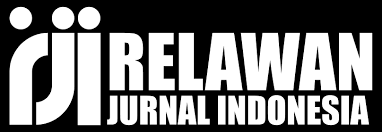IMPLEMENTASI INOVASI KEBIJAKAN DALAM PENYELENGGARAAN SISTEM PEMERINTAHAN BERBASIS ELEKTRONIK (SPBE) DI KABUPATEN DONGGALA
DOI:
https://doi.org/10.61722/jipm.v3i`1.682Keywords:
Innovation, Policy, Electronic Based Government System (SPBE).Abstract
To achieve high-quality government administration as outlined in Presidential Regulation No. 95 of 2018, which focuses on delivering optimal public services, ensuring transparency, accountability, efficiency, and fostering clean governance, local governments must develop innovative policies centered on Electronic-Based Government Systems (SPBE) . This research aims to examine the implementation of innovation policies in implementing SPBE in Donggala City. This research utilized both primary and secondary data collected through interviews, observations, and documentation. The data were analyzed to derive conclusions about the issues under study. The findings reveal that the innovation policies for implementing SPBE in Donggala City have been executed effectively, evident in the development of service applications that enhance public accessibility. Nevertheless, challenges persist, including limited public awareness about the applications and a shortage of human resources with specialized technical skills in Information and Communication Technology (ICT).
References
Hidayati, S.N. (2016). Pengaruh Pendekatan Keras dan Lunak Pemimpin Organisasi terhadap Kepuasan Kerja dan Potensi Mogok Kerja Karyawan. Jurnal Maksipreneur: Manajemen, Koperasi, dan Entrepreneurship, 5(2), 57-66. http://dx.doi.org/10.30588/SOSHUMDIK.v5i2.164.
Risdwiyanto, A. & Kurniyati, Y. (2015). Strategi Pemasaran Perguruan Tinggi Swasta di Kabupaten Sleman Yogyakarta Berbasis Rangsangan Pemasaran. Jurnal Maksipreneur: Manajemen, Koperasi, dan Entrepreneurship, 5(1), 1-23. http://dx.doi.org/10.30588/SOSHUMDIK.v5i1.142.
Bator, R. J., Bryan, A. D., & Schultz, P. W. (2011). Who Gives a Hoot?: Intercept Surveys of Litterers and Disposers. Environment and Behavior, 43(3), 295–315. https://doi.org/10.1177/0013916509356884.
Norsyaheera, A.W., Lailatul, F.A.H., Shahid, S.A.M., & Maon, S.N. (2016). The Relationship Between Marketing Mix and Customer Loyalty in Hijab Industry: The Mediating Effect of Customer Satisfaction. In Procedia Economics and Finance (Vol. 37, pp. 366–371). Elsevier B.V. https://doi.org/10.1016/S2212-5671(16)30138-1.
Armand, F. (2003). Social Marketing Models for Product-Based Reproductive Health Programs: A Comparative Analysis. Occasional Paper Series. Washington, DC. Retrieved from www.cmsproject.com.
Belair, A. R. (2003). Shopping for Your Self: When Marketing becomes a Social Problem. Dissertation. Concordia University, Montreal, Quebec, Canada.
Lindawati (2015). Analisis Faktor yang Mempengaruhi Perilaku Ekonomi dan Kesejahteraan Rumah Tangga Petani Usahatani Terpadu Padi-Sapi di Provinsi Jawa Barat. Institut Pertanian Bogor. Retrieved from http://repository.ipb.ac.id/ handle/123456789/85350.
Kotler, P., & Lee, N. R. (2009). Up and Out of Poverty: The Social Marketing Solution. New Jersey: Pearson Education, Inc.
LPPSP. (2016). Statistik Indonesia 2016. Badan Pusat Statistik, 676. Jakarta. Diakses dari https://www.LPPSP.go.id/index.php/publikasi/326.
Risdwiyanto, A. (2016). Tas Kresek Berbayar, Ubah Perilaku Belanja? Kedaulatan Rakyat, 22 Februari, 12.
Chain, P. (1997). Same or Different?: A Comparison of the Beliefs Australian and Chinese University Students Hold about Learning’s Proceedings of AARE Conference. Swinburne University. Available at: http://www. swin.edu.au/aare/ 97pap/CHAN97058.html, diakses tanggal 27 Mei 2000.
StatSoft, Inc. (1997). Electronic Statistic Textbook. Tulsa OK., StatSoft Online. Available at: http://www.statsoft.com/textbook/stathome.html, diakses tanggal 27 Mei 2000.
Downloads
Published
How to Cite
Issue
Section
License
Copyright (c) 2024 JURNAL ILMIAH PENELITIAN MAHASISWA

This work is licensed under a Creative Commons Attribution-ShareAlike 4.0 International License.













